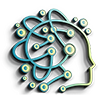
Electronic design is a crucial discipline within the realm of electrical engineering that focuses on the creation, development, and testing of electronic circuits and systems. It encompasses a broad spectrum of technologies and applications, ranging from integrated circuits and microprocessors to intricate communication systems and hardware devices. The process of electronic design involves the integration of theoretical knowledge, practical skills, and innovative thinking to bring forth cutting-edge electronic products that meet the demands of today’s digital era.
Key elements of electronic design include:
1. Circuit Design: This involves the creation of electronic circuits using components such as resistors, capacitors, transistors, and integrated circuits. Engineers need to consider factors such as power consumption, signal integrity, noise, and electromagnetic interference while designing these circuits.
2. Printed Circuit Board (PCB) Design: PCBs serve as the backbone of most electronic devices, providing a platform for connecting various components. Designing a PCB involves laying out the components and routing connections, taking into account factors such as signal integrity, power distribution, and thermal management.
3. Digital Design: With the rise of digital systems, designing digital circuits, logic gates, and processors has become a fundamental aspect of electronic design. Engineers use hardware description languages like VHDL or Verilog to simulate and design digital systems.
4. Analog Design: Analog electronics play a critical role in processing real-world signals. Designing analog circuits requires a deep understanding of concepts such as amplifiers, filters, and signal processing to ensure accurate and reliable signal transmission and reception.
5. Mixed-Signal Design: Many modern electronic systems integrate both analog and digital components. Designing such mixed-signal systems requires expertise in handling the complexities that arise from the interaction between analog and digital circuits.
6. Simulation and Testing: Engineers use simulation software to test and validate electronic designs before moving to the physical prototype stage. This step ensures that the design meets performance requirements and functions as intended.
7. Power Electronics: Designing efficient power management systems is critical for various applications, including renewable energy systems, electric vehicles, and consumer electronics. Power electronic design involves optimizing energy conversion, distribution, and storage to maximize efficiency and reliability.
8. Embedded Systems Design: This involves integrating hardware and software to create dedicated computing systems for specific applications. Embedded systems are pervasive in everyday devices, from household appliances to industrial automation systems.
As technology continues to advance, electronic design continues to evolve, encompassing areas such as Internet of Things (IoT), wireless communication systems, and wearable technology. The focus remains on creating efficient, reliable, and innovative solutions that drive the development of modern society.
